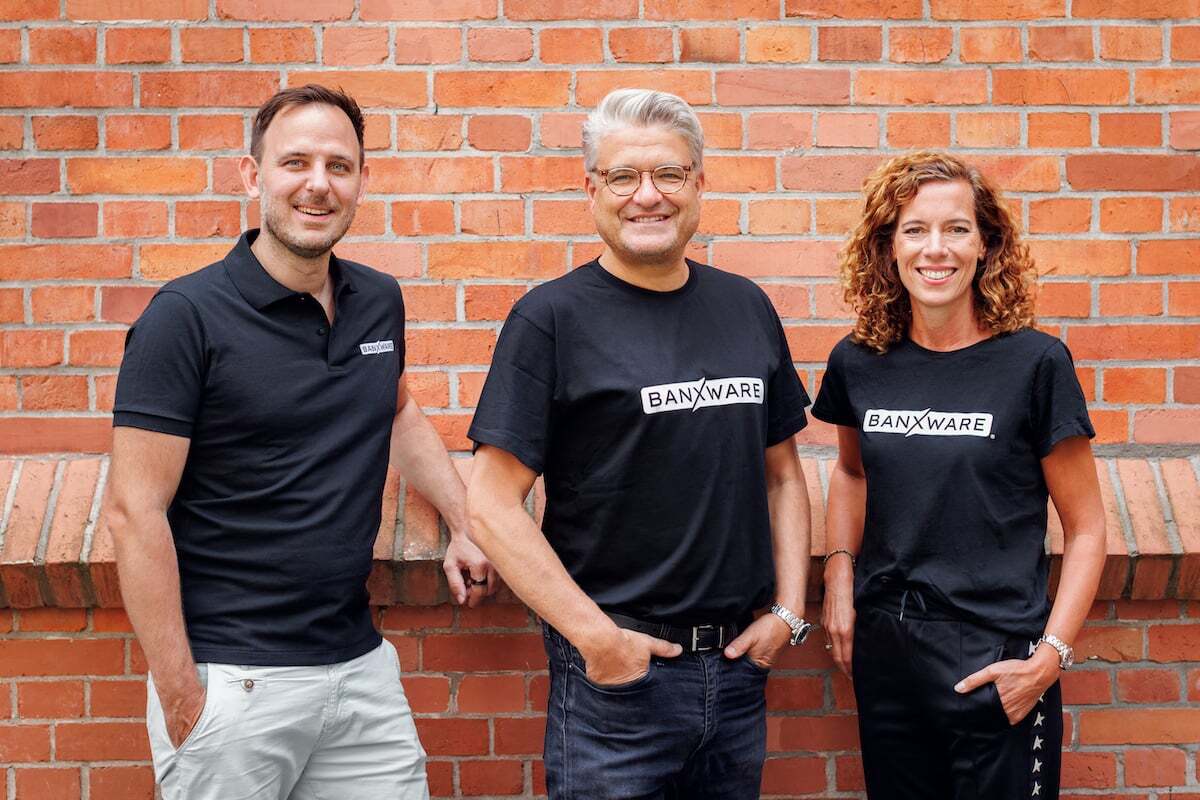Hi friends
Welcome to the second-last edition of the Embedded Finance Review in 2023. I am using the cold winter days here in Berlin to think about how to improve the newsletter in 2024. If you are a builder of fintech products at a non-financial company and are willing to help me improve this newsletter, please reply.
But let’s get started. In this edition, I cover:
- 🧾 German invoicing tool lexoffice embeds a banking product
- 💰 German embedded lending provider Banxware raises Series A
- 😩 Apple and Tesla face challenges with their embedded finance products
- 🏗️ Plus, a lot of BaaS news from Europe and the US
- 👨🎨 Lastly, you can find a payment and product manager role on the job board!
Also, I finished cleaning up my subscriber list. Thus, the subscriber list has been reduced by another ~50 subscribers. While it’s no fun to see the number decreasing, having a healthy subscriber list is more important.
Thank you and the other 807 subscribers for supporting my work.
Shoutout to Eloi Lanthiez, who was the first person to refer five new subscribers to this newsletter. He earned the reward of a personal shoutout with a link of his choice: He chose the website of his employer, Berlin-based embedded insurance provider Embea.
If you are interested in earning such a reward too, read below!
lexoffice launches banking product in cooperation with Solaris

German digital invoicing solution lexoffice launches a bank account and debit card product in cooperation with Solaris (product website and product launch coverage - both only in German).
The brand lexoffice was started in the early 2010s by it’s mother company, Lexware, which offers similar services but in desktop versions. Lexware, and consequently Lexoffice, are part of the Haufe Group, which was founded in the 1950s as a publishing business but is now mostly offering software products. lexoffice’s typical customers are self-employed and small business owners who use lexoffice for their bookkeeping activities, such as writing invoices.
For a few years, lexoffice users could already connect external bank accounts via the open banking integration and it is very likely that lexoffice will continue to offer this integration. So why did lexoffice decide to offer a banking product themselves? While the integration of bank accounts via open banking works relatively well, a service like lexoffice can create a better user experience with an embedded banking product: real-time data and no need to re-enter credentials are two examples. Additionally, a company that offers banking products themselves can monetise them by charging the customer or through interchange. While the company can also charge the customer for an open banking integration, this is uncommon and rather impossible to achieve.
When companies like lexoffice launch such banking products, they never aim to convert all their customers to their own banking product. There should be plenty of benefits for the user to make the move; however, if a customer wants to stick with their existing bank (and there can be many reasons for that), they can still use the service. Typically, the business case of the brand offering banking products does not require the majority of users to make the switch, but anything between 20 and 40% is often considered a success, depending on various details.
We have seen a couple of providers in Europe that have launched business bank accounts in the past few months (i.e., Moneybird and Jimdo), and I know we will see more of such companies launch their own business banking products. As long as the brands can create unique user benefits by combining financial and non-financial products and/or have unique access to potential customers, they are in a good spot to succeed.
Other Non-Financial Brand News
🇸🇪 Airline SAS announces a travel protection offering that is directly embedded within the customer booking flow.
🇺🇸 Tesla’s promise of a ‘vastly better’ auto insurance experience falls short.
🇺🇸 Apple reportedly pulled the trigger and ended its relationship with Goldman Sachs for the Apple Card. Some anticipate the end of the Apple Card, but it seems a lot more likely that Apple finds a partner that is a better fit.
Not embedded finance news, but still relevant:
🇺🇸 Airbnb earns more than half a billion dollars as a bank. This may sound exciting from an embedded finance standpoint but it is not really embedded finance. Airbnb remains one of the ideally positioned companies for embedded finance (from wallets and cards to mortgages) but doesn’t leverage it.
🇺🇸 Comdata has launched a payment solution that allows fleet owners to enjoy both the benefits of a fuel card and the rewards of their existing credit card.
Embedded Lending provider Banxware raises Series A

This week, Banxware announced its Series A funding of 15 million euros from UniCredit and Fabrick, supported by Sella Investment Bank. Banxware is the first embedded lending provider in Germany and was also a sponsor at our last Embedded Finance Review event in Berlin. I thought to dive a bit into the topic of embedded lending and discuss what companies will be front-runners in adopting it.
Why ‘embedded’ lending?
Small and medium-sized companies need financing to grow their businesses, but applying for and receiving this can be a struggle for many. Extremely speaking, the owner of a company can either walk into a branch and apply for a loan after submitting paper documents, or she can apply for a loan without any additional data input in the software she is already using. I think all of us can imagine that the digital embedded way is much more convenient. But from personal experience, I can tell you that a business owner is much more likely to apply for funding if it’s that convenient. Many company owners are unsure about their possibilities of receiving financing and thus avoid searching, contacting, and submitting a loan application in the first place. Additionally, while the price of a loan matters, it does not even come close to the speed of application and approval. Usually, technology-driven ‘embedded’ solutions can achieve this need for speed.
Where does ‘embedded lending’ make sense?
I guess you figured that I am pro-’embedded lending’ but if you are a regular reader of the newsletter, then you will also know that I don’t think every financial product will be embedded everywhere in no time. I believe embedded finance will be a journey for many industries and just looking at the characteristics of the industries, some are likely to adopt it first before others.
As a rule of thumb, embedded finance is ideally placed when the tool provides a sticky and data-rich service. While this is a general statement, it applies even stronger to embedded lending. And we can see that in companies that are offering an embedded lending product, including some of Banxware's existing clients. There are two groups of companies that are considered extremely well positioned.
Marketplaces
Many merchants sell their products over a marketplace, and in many cases, they have the majority of their total revenue from one marketplace. Therefore, this marketplace knows almost everything about their merchants. Additionally, the marketplace has a strong interest in helping their merchants grow (aka sell more) and usually merchants need external financing options to achieve that. Theoretically, merchants could go to the bank but we all know that is often not a realistic option (remember when Shopify’s CPO said in an interview they didn’t want to offer lending but had no other choice). With financing, merchants are able to ramp up inventory, sell more products, and generate more revenue—a win-win for the marketplace and the merchant.
SME SaaS
With the rise of fintech and other trends, we have seen an explosion of SaaS tools for business owners, from invoicing and cash flow management to vertical SaaS. Many company owners live in the tools they are using and if you want to know anything about the business, you can probably find that data in these tools.
A practical example could be Tidely, whose founder was actually also on stage during our last Embedded Finance Review event in Berlin. They offer a cash flow management software solution and they have embedded Banxware to help their users apply for and receive financing. Such tools can take embedded lending even a step further and make it even more convenient to apply for financing. For example, Tidely is offering an alert system that gets triggered when a customer’s liquidity level drops to a certain level. If eligible, it guides the company owner to Banxware’s financing solution.
I think the space of embedded finance in general or embedded lending specifically, is very exciting and here to stay. I am not naive that everybody will switch from traditional loan applications to embedded lending tomorrow, but I guess we can all agree that the ‘embedded’ approach has many advantages. It is our job to make it work.
Other Infrastructure News
🇱🇹 Solaris-owned Contis was slapped with an $840K fine from the Bank of Lithuania over AML violations. In addition to the fine, the organisation faces restrictions on business development until it remedies these deficiencies.
🇫🇷 Embedded Finance Europe, or probably better known under its previous name Railrs, applies for an EMI licence in France.
🇪🇺 Nuvei has launched its new card-issuing solution in 30 markets. This offering allows Nuvei clients to provide their customers, employees, or contractors with both physical and virtual white-labeled cards.
🇫🇮 Enfuce has secured an €8.5 million follow-on investment round led by Vitruvian Partners, with participation from Visa.
🇦🇹 Credi2 has announced its partnership with Marqeta in order to provide new installment capabilities for banks across Europe.
🇺🇸 Blue Ridge Bank is preparing to reduce its banking-as-a-service relationships down to a “limited number” after drawing the attention of US regulators last year.
🇺🇸 CapitalOS, a provider of spend management infrastructure for B2B platforms, has launched from stealth and received $9 million in equity funding.
🇪🇬 Open banking provider Codebase Technologies is launching Egypt’s first banking-as-a-service in partnership with Visa.
Insightful reads
🤔 UK government says country needs open banking alternatives to Visa and Mastercard
👷♂️ Whitesight’s published its 2023 Embedded Insurance Roundup: From ridehailing to logistic, all focus on gig-econony.
Job Board
1️⃣ Senior Payment Manager at a vertical payment provider.
2️⃣ Product manager at an infrastructure provider for private market investments.
Does one of these roles sound interesting to you? Hit reply, and I will tell you more!
Are you hiring? Submit your vacancy and get featured in the next edition.
Are you looking for a new opportunity? Submit your profile and we will send you suitable opportunities (we won’t share your name with anybody).








